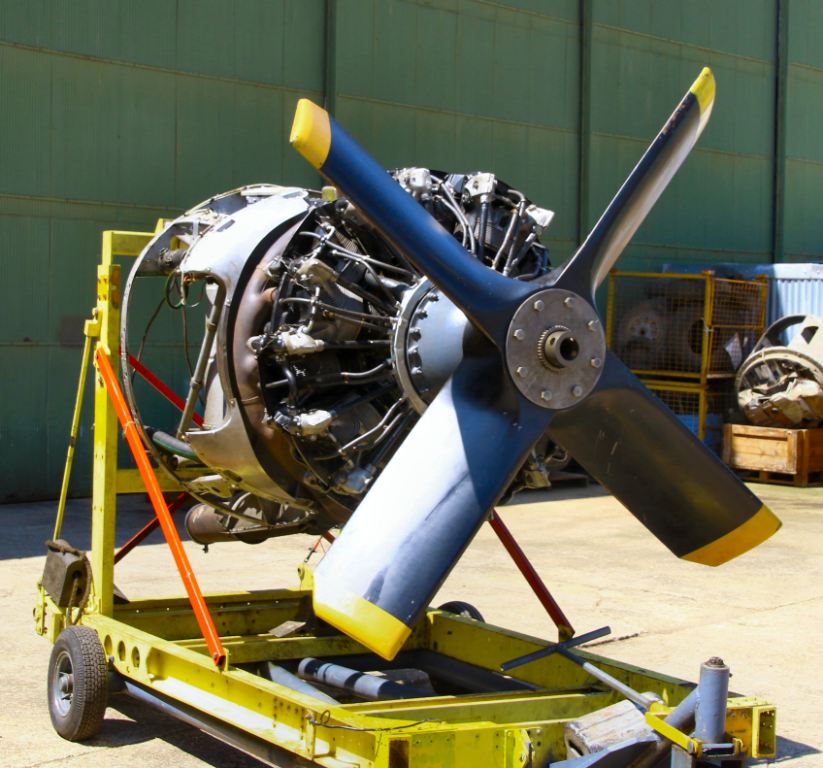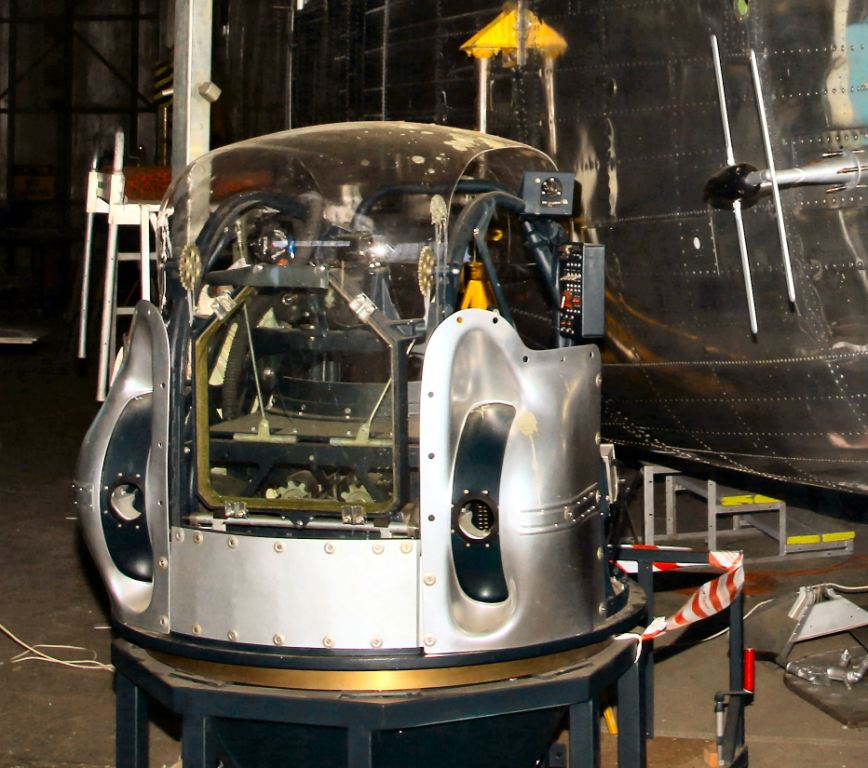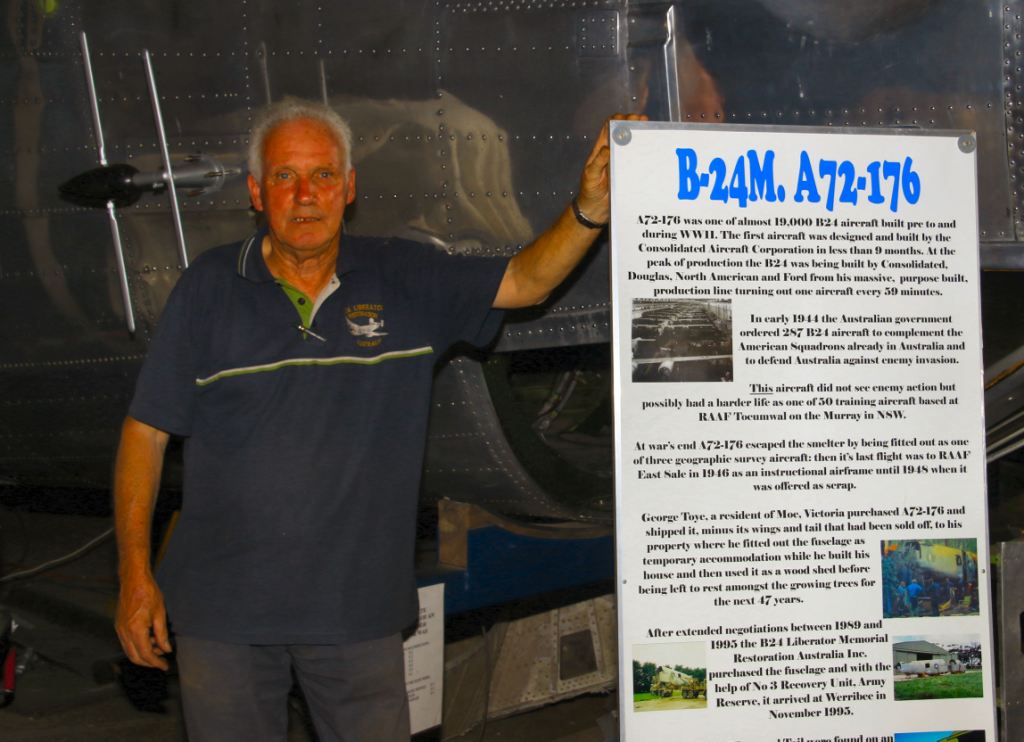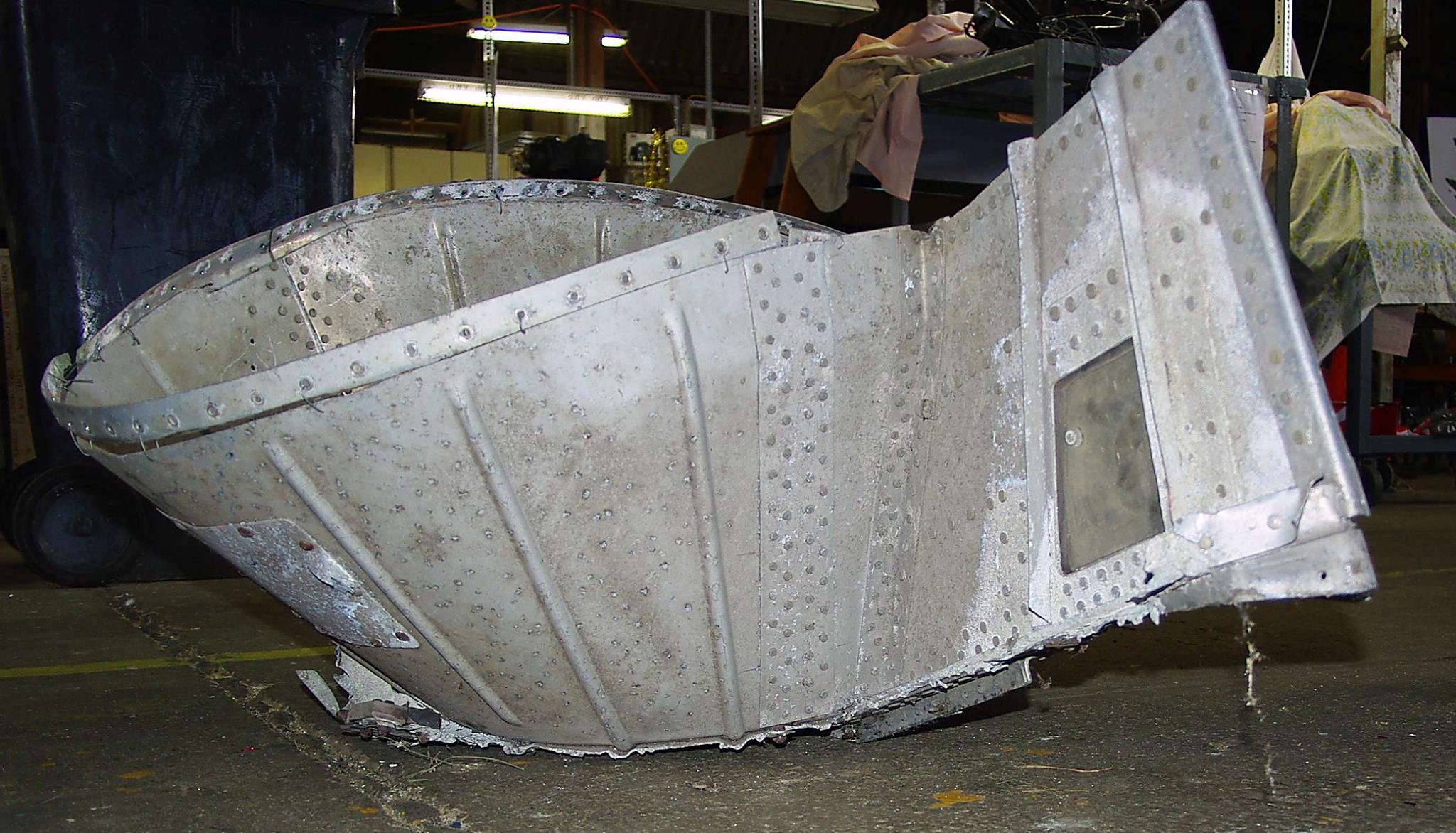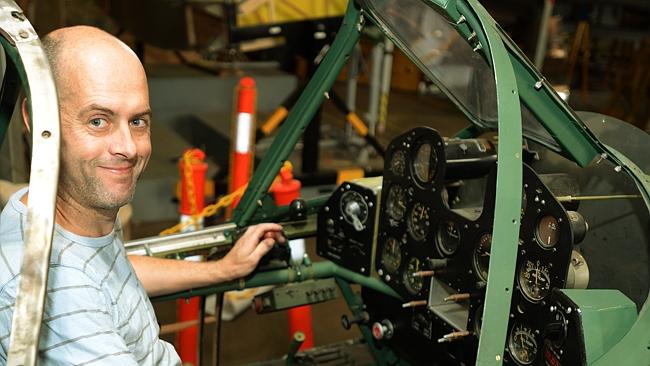|
|
||
|
||
|
Privacy Policy | Editorial Policy | Profit Policy | Join the Association | List of Members | Contact us | Index | Links |
||
|
Back Go to page: 1 2 3 4 5 6 7 8 9 10 11 12 13 14 15 16 17 18 19 20 Forward |
||
|
|
||
|
The Werribee Liberator |
||
|
|
||
|
Early into WW2, the Commonwealth realised that an alternate airfield would be needed for both Laverton and Point Cook training fields, so 140 hectares (340 acres) of land belonging to the Melbourne Metropolitan Board of Works (MMBW) was acquired and set aside at Werribee next to the Princes Highway. This was to be a grass all-over field upon which were built 5 large hangars, one large and four smaller ones, all of which encircled an administration and works area comprising a fuel compound, workshops, storage tanks, armament, accommodation and ablution huts with associated septic tanks.
(You can click a lot of the pics for a better view.)
|
||
|
|
||
|
During the War a number of units were established at the airfield, including:
· No 9 Repair and Salvage Unit (9 RSU). This unit was involved in salvaging and repairing various crashed aircraft in the region. · No 22 Repair and Salvage Unit (22 RSU) and No. 26 Repair and Salvage Unit (26 RSU). · No 1 Recovery Depot. · No. 1 Stores Depot detachment. · No 12 Aircraft Repair Depot (12 ARD). · No 5 Medical Receiving Station was established at The Manor at Edgar St, about 1.5 kms north of the Werribee Airfield. · The Werribee Bombing Range was located approximately 5.5 miles west of Werribee Airfield. · The US Army established a Radio site almost 5 miles north west of Werribee Airfield. · The Australian Army had been using the nearby Racetrack as a camp. An advanced party of the 2/3rd LAA Regiment moved into camp there on 20 August 1940. · In 2014 the former WWII Werribee Airfield was being used by the B-24 Liberator Memorial Fund Inc. for the rebuilding of their B-24 Liberator A72-176 inside one of the former WWII Hangars.
Werribee was also used as a storage area for aircraft that were produced at Fisherman’s Bend and also for the assembly of aircraft coming from the UK.
In 1952 the RAAF handed the land and buildings back to the MMBW which used the buildings for storage of equipment and supplies, the rest of the area was returned to pasture. Two of these hangars remain today, both now being heritage listed, though the large one is unsafe and unusable.
During the War there was an obvious shortage or steel, so alternate methods of construction were needed to build these buildings with the required unobstructed span width necessary to accommodate an aircraft. A roof design known as a “Pratt Truss”, which consists of a series of triangular units connected at joints, is able to span large distances, but these were normally built from steel.
|
||
|
|
||
|
|
||
|
It wasn’t long before it was discovered that the design could be adapted to use Australian hardwoods instead of steel and Geelong firm J.C. Taylor and sons was contracted to build them. |
||
|
|
||
|
|
||
|
One of the four smaller hangers was recently upgraded and is now used by the B-24 Liberator Restoration Fund.
Back in 1988, two
men, Eric Clark, a former Liberator wireless/radar operator and waist
gunner and Bob Butler, a former Liberator pilot, hosted
It was agreed to search for a B-24M model (the last model) as this was also one of the models flown by the RAAF, it had an improved tail turret, the 2 waist gunner positons were left open and the Sperry retractable ventral ball turret was reintroduced.
|
||
|
|
||
|
|
||
|
Eventually part of an airframe was found in the Gippsland area and negotiations commenced to acquire it. This particular aircraft which, in 1944, was built for the RAAF as a B-24M, was assigned the RAAF serial A72-176 and then flown to Australia. It was modified with a search radar in the lower fuselage to help locate and track targets. On landing in Australia, it was assigned to 7 OTU (Operational Training Unit) based at Tocumwal, south west NSW where bomber crews were taught how to fly the bomber, operate as a team and work with fighters. Towards the end of the war there were up to 50 aircraft located at Tocumwal along with 5,000 personnel. A72-176 was noted as being flown on training missions by various aircrew, one of whom was G/Cpt Kingwell, who was later to become quite involved with its restoration project in the 1990s.
|
||
|
Charles “Nick” Cull with the SCR 717 Radar.
|
||
|
“Nick”, one of the many volunteers, is an old RAAF radio tech, having gone through Ballarat in 1955 – 56. Nick, who has been with the project for many years, looks after the radio equipment fitted to the Liberator and is currently working on the SCR 717 radar unit.
The SCR 717 was a 150 kWatt 10 cm radar that could pick out a heavy ship from 70 miles away or a surfaced submarine from 20 miles. Like a lot of other radio/radar equipment of its day, it consisted of a number of separate and heavy black boxes, the total weight of the complete unit was a whopping 773 lbs (350 kg).
The retractable antenna was fitted in two places, in
some aircraft is was
where
the lower gun turret would normally be but with this aircraft it was
fitted just “north” of the lower turret and “south” of the nose wheel.
The auxiliary equipment was spread throughout the aircraft. I
In March 1946, the Liberator was retired from RAAF service and in 1948 it was finally disposed of at East Sale with the fuselage being sold to a George Toye. Sadly, by the time George bought it, the RAAF had scrapped both the tail and wings. Still George accepted the fuselage as it was and used it as temporary accommodation while he built his new house. After the house was completed, the bomber sat on his property between the 1950s and the early 1990s; during this time it was exposed to the elements. In 1989 the B-24 Fund became aware of the B-24’s fuselage which was located at Moe, Victoria. The Fund members agreed to purchase it on condition that they could find a wing and tail. The hunt was then on for a wing and tail, both of which were found in 1991. They were acquired from a USAAF B-24D Liberator which had crashed in Papua New Guinea during WW2. The RAAF, Army, Qantas, Shell and many other companies helped in recovering the wing and tail, which saw them imported into Australia in 1992 and eventually moved to Werribee.
The B-24 Fund then went back to George Toye who wanted to alter the original arrangement, so while members worked on the wing, further negotiations were conducted and eventually, in 1995, agreement was reached, which finally saw the fuselage moved to Werribee.
|
||
|
|
||
|
After 50 years of exposure, the fuselage was looking quite battered and it was clear that it would need a lot of restoration work. During 1996 a clean-up of the fuselage internally and externally was started to remove all the accumulated grime and on the 15 August, 2000, the fuselage and wing were mated before an audience of 1,100 made up of WW2 veterans, special visitors and members.
Remarkably, from a total of nearly 19,000 aircraft built during the war, this one is the only remaining Liberator in the southern hemisphere and one of only eighteen left in the world.
The museum is a “working” site and visitors are able to see and talk to the passionate volunteer workers who are all focused on their work of restoring the bomber. Their high skill level is readily apparent when people see the workmanship that has being put into various areas such as the cockpit, bomb bay, engines and wing sections. Some volunteers have been involved for years helping to restore the aircraft, including some of the WW2 RAAF B-24 veterans at times helping out despite being in their 90s. The project has so far acquired more than 90% of the airframe and 70% of its furniture and fittings and is currently undergoing an extensive fit out covering the nose, cockpit, bomb bay, waist gunners and tail gunner sections.
|
||
|
Dave Miller, the Future Development Coordinator, with a restored Liberator control panel/cockpit area.
|
||
|
Dave made us feel very welcome and gave us a very thorough and in depth look around, and for that we thank him.
The project has five engines that are now
operational, but none are yet fitted to the wing; the tail-plane is
complete but not fitted; the wing is still
|
||
|
|
||
|
The core aspect of the project is now focused on making the B-24 a “living bomber”. It will not be flown but instead restored to a high quality as seen with other “living” warbird aircraft overseas such as the Just Jane Lancaster in the UK, which is now being upgraded to fly. The aim is for the B-24 at Werribee to be shown to the public with all elements "operational". It is hoped that the bomber will eventually be taxi-able. To enable the B-24 to “live”, four working examples (and one spare backup) of the Pratt and Whitney Twin Wasp 1830 engines are to be used.
|
||
|
|
||
|
These powerful and compact engines produce 1,200hp output via a two-row, 14-cylinder, air-cooled radial design. Some of the engines were donated, with one coming from an anonymous person, while two of the engines were purchased from Peter Starr of Dakota National Air. Visitors to the museum can see these engines up close and listen to the sounds via monthly engine running sessions. (There’s nothing like the sound of a round engine at full chat!!)
The hangar is also home to working displays which
allow visitors to see how the aircraft systems worked. Visitors can
examine up close and watch how the defensive protection of the B-24
worked. The protective fire came from many of its M2 0.5inch machine
guns located around the airframe
The Fund has developed a strategic and detailed future plan for the ongoing preservation of its collection. It is hoping to also display a replica WW2 era Tiger Moth, Oxford aircraft and an Anson trainer. These aircraft types were mainly made from fabric/wood/steel, so they will require extensive work.
This project includes the first aircraft to be recognised under the Engineers Australia Heritage Recognition Program. The B-24 Liberator, features the Davis Wing which was a breakthrough in aeronautical engineering design at the time and which was developed by David R. Davis in 1937. Davis was a freelance aeronautical engineer and when his design was tested in the California Institute of Technology’s (Caltech) wind tunnel the results were so good they were unbelievable. Consolidated used the wind design on their Model 31 flying boat where it proved so successful they decided to use it also on the Liberator.
It was only after the end of the war that the reason for the Davis wing's excellent performance became clear. The shape, largely through luck, was able to maintain laminar flow over a wider area of its leading edge, to about 20 or 30% of chord. In comparison, most airfoil sections of the era were more typically 5 to 20%. Although later designs were able to greatly improve on this, with modern designs maintaining laminar flow to upwards of 60% of chord, the Davis wing represented a great improvement at the time.
|
||
|
Tony Maher, the Safety Officer. (Click here to read the sign). |
||
|
|
||
|
On the 21st October, 2014, the Victorian State Government gave the land on which the hangar (H1) stands to the B-24 Liberator group. They now have tenure and can start planning the museum complex in earnest. Now, after nearly 30 years since the bold vision was started, the ambitious project is getting closer to reaching the goal of preserving a B-24 Liberator to honour the contribution of one of the RAAF’s main bombers of the WW2 era. It is hoped to have it out of the hanger and on display by 2020.
If you’re in the area, definitely go and see the project. When you see what they stated with (with bits like that below) and see what they have today, you’ll be amazed that they could do it, they must definitely be congratulated.
|
||
|
|
||
|
|
||
|
|
||
|
The hanger, which is located on the corner of Princes Hwy and Farm Rd in Werribee, is open to the public on Tuesdays, Thursdays and Sundays from 9:30 AM to 3:30 PM. Admission is only a $5 donation per person. There is no charge for visitors under 16 years of age.
For more information on the restoration project and lots more photos, visit their Facebook page at https://www.facebook.com/B24Werribee .
|
||
|
My girlfriend thinks that I'm a stalker. Well, she's not exactly my girlfriend yet.
|
||
|
The Boomerang.
Nick Knight has been rebuilding a World War II fighter plane at his Hoppers Crossing house but the Boomerang – the only aircraft designed and built in Australia (who else would call an aeroplane a Boomerang???) that saw active service in the war – has outgrown its home.
|
||
|
|
||
|
|
||
|
Nick, 39, (above) has been collecting parts for the Boomerang for more than 20 years and started rebuilding the plane, salvaged from a wreckage, in 2003.
He said his interest in the fighter plane was spurred by the fact that his grandfather worked for the company, Commonwealth Aircraft Corporation, that made it. “I wanted to bring one back from the dead for people to see,” he said. He said he started rebuilding the plane in his parents’ carport before he bought his own house but eventually he ran out of space in his two-car garage.
“It was pretty difficult,” he said. “There wasn’t a lot of space. “I’ve wanted for a long time for the public to see (the Boomerang). It will help educate people.”
The plane has been moved to the B-24 Liberator Restoration Fund hangar in Werribee so that he can finish it. The fund’s future development co-ordinator David Miller said the plane was on display alongside the B24 Liberator and the new rebuilding project, the Airspeed Oxford. Now there is an extra reason to visit the hangar
He said it was ironic that the fighter plane had ended up at the hangar. “When the Boomerang was first being tested out of Laverton, its propeller stopped working and it crash-landed at this airfield,” Mr Miller said.
You can see the progress on the rebuilding HERE.
|
||
|
|
||
|
|
||
|
|
||
|
|
||
|
Back Go to page: 1 2 3 4 5 6 7 8 9 10 11 12 13 14 15 16 17 18 19 20 Forward |
||
|
|



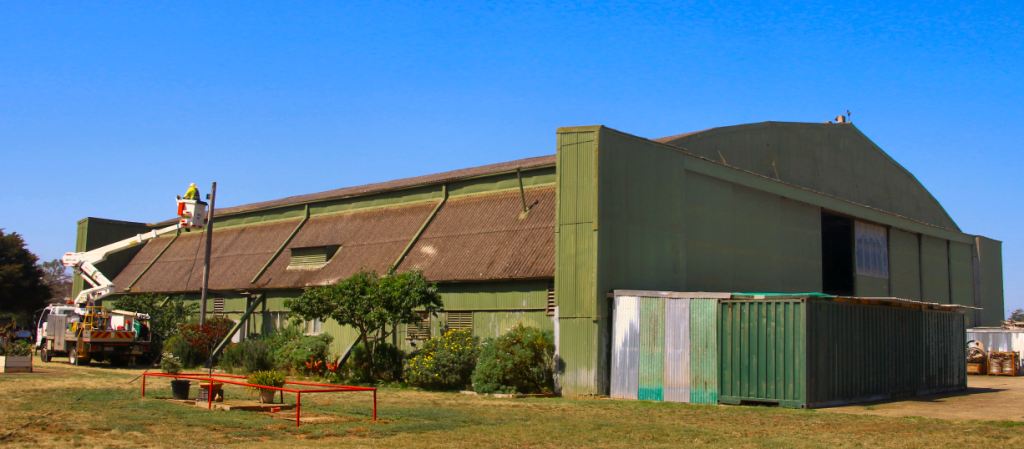
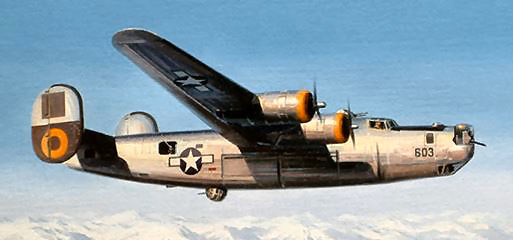
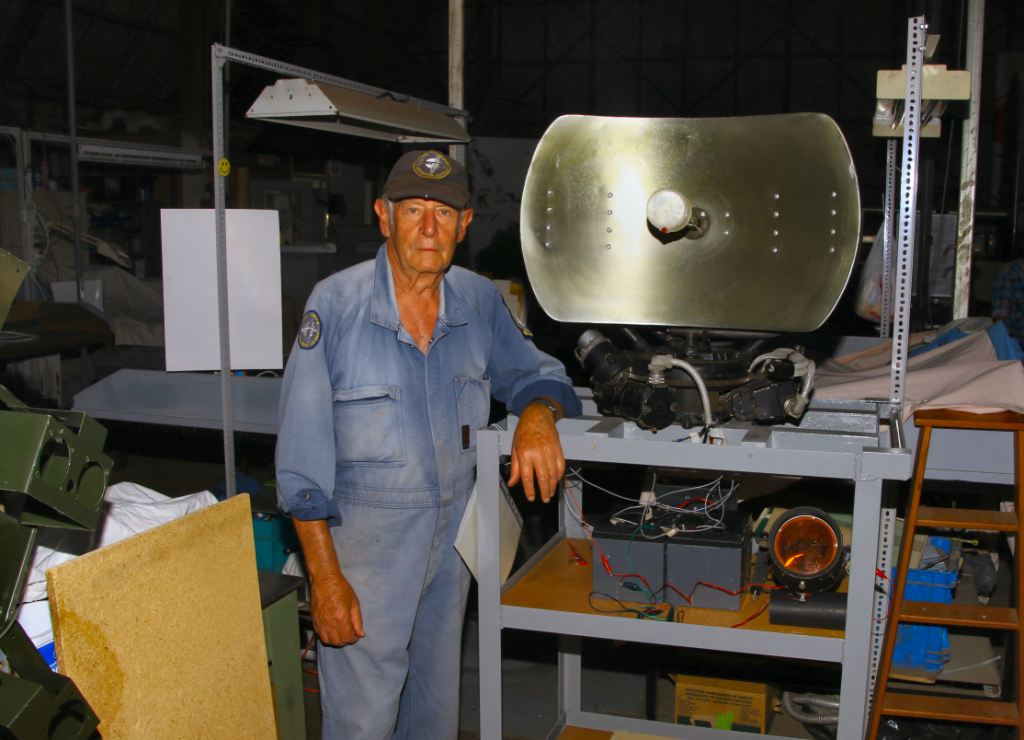
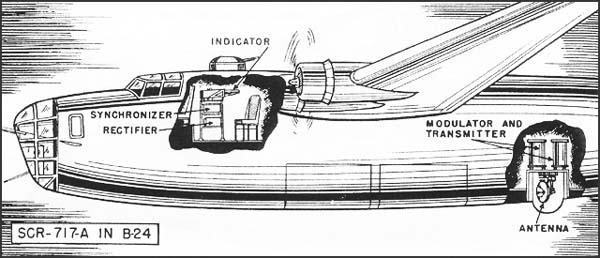
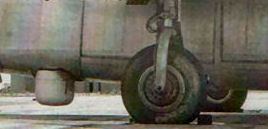 t required
two men to operate if, one radio operator and one maintenance man and it
drew a huge 100 amps from the aircraft’s 27.5 volt DC supply.
t required
two men to operate if, one radio operator and one maintenance man and it
drew a huge 100 amps from the aircraft’s 27.5 volt DC supply.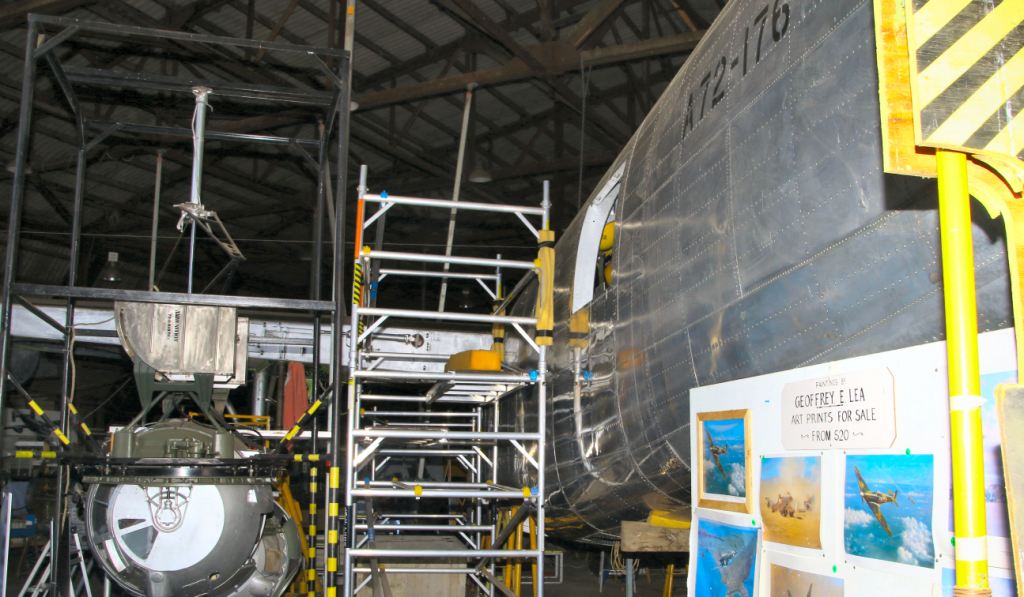
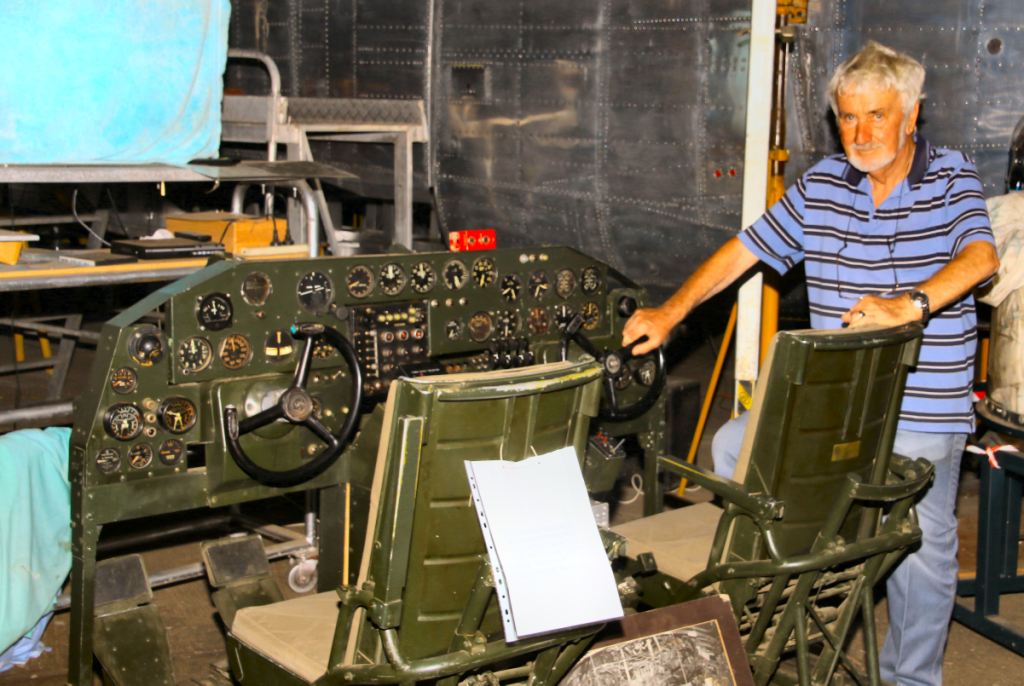
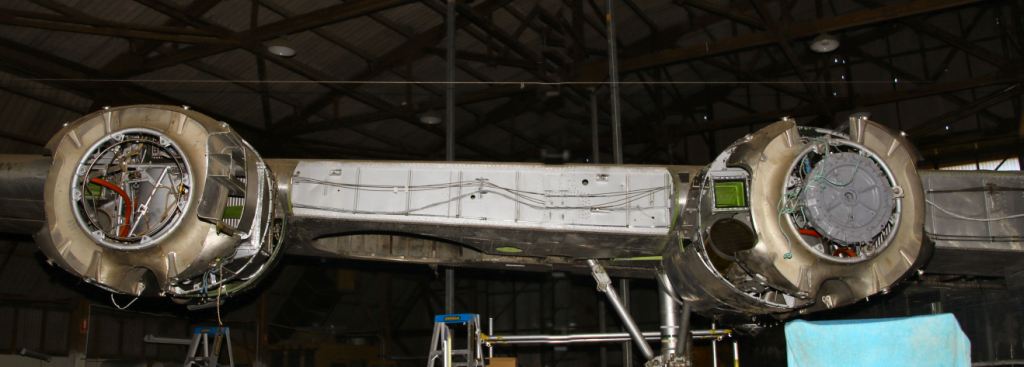 undergoing a long term clean-up and restoration and the wing tips are
made but not fitted due to space limitations. The B-24 can stand on its
own undercarriage and wheels but for the moment is held off the ground
by jacks to preserve the wheels and struts. The volunteers are currently
fitting out the internal crew stations, installing the internal wiring
in the fuselage and wings along with other operational / life support
systems. Components are sourced locally, nationally and globally to
rebuild the bomber, and some parts have been made on site using the
metal and handcraft skills of volunteers. Some parts have been
duplicated at the workshop and on-sold/traded to help other B-24
projects around the world.
undergoing a long term clean-up and restoration and the wing tips are
made but not fitted due to space limitations. The B-24 can stand on its
own undercarriage and wheels but for the moment is held off the ground
by jacks to preserve the wheels and struts. The volunteers are currently
fitting out the internal crew stations, installing the internal wiring
in the fuselage and wings along with other operational / life support
systems. Components are sourced locally, nationally and globally to
rebuild the bomber, and some parts have been made on site using the
metal and handcraft skills of volunteers. Some parts have been
duplicated at the workshop and on-sold/traded to help other B-24
projects around the world.